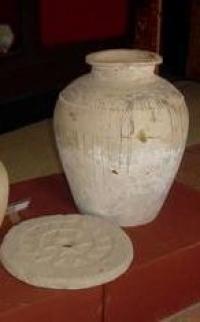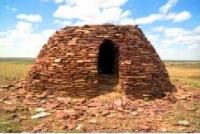You are here
Architectural monuments of Turgai.


Spiritual shrines of Kazakhstan.
“History is the same night. There is no background in it. Everything that is not in the foreground immediately disappears from sight and drowns in darkness. When the scenery is removed, the memory of them disappears, oblivion sets in. The past and the unknown are synonyms"
Victor Marie Hugo.
Kazakhstan culture map.
The real pearl of natural resources and historical monuments is the ancient village of Yekidin (Amangeldy district, the center of the Saryturgai rural district). Pre-Islamic times include two ancient spherical structures made of wild stone - melons, which gave the name to the aul.
According to academician A.Kh. Margulan, these structures, which are quite rare on the territory of Kazakhstan, known under the name "itas" or "dyng", were built in the form of the oldest Kazakh dwelling "shoshaly" and, possibly, had ritual significance.
The presumable date is the early Iron Age. According to local legends, in the IXth - XIth centuries a bloody battle took place in the valley between the hills on which the melons stand. It was here that the headquarters of the warlords of the warring clans were located.
In the 80s of the twentieth century, funds raised by the local population were used to restore the melons, partially destroyed by that time. Among other memorial and cult monuments of the Kazakh people, which are found in abundance near Yekidin, the mazar of Zhauke-batyr, a comrade-in-arms of the leader of the national liberation uprising of the second quarter of the XІX century, Khan Kenesary, attracts attention.
According to legend, the batyr was buried here in 1847.
The monument "Kyz-Tama" ("Maiden's Grave") dates back to the second half of the IXth century. According to legend, this is the grave of a girl who was famous for her wisdom and eloquence.
They say that once she even managed to stop the battle of two warring clans and reconcile her fellow tribesmen.
The local mosque, built in the IXth century from baked bricks, is also of interest. But most of all, both local residents and visitors are attracted by the Sakhan Makat mausoleum, dating from the beginning of the XXth century.
The remains of the descendants of Makat from the Tulek clan of the Argyn tribe are buried here. He was a wealthy and very learned man. With his children, he built a mausoleum, which has been perfectly preserved to this day.
You can enter the mausoleum only one at a time, as the entrance is very narrow. Within the walls of the mausoleum, the descendants of Makat laid the bodies of their deceased relatives. They buried here according to ancient Kazakh customs.
When a person died, his body was not buried, but placed in an underground room. The room was divided into two parts by a white curtain: the bodies of men were placed in one, and the bodies of women in the other.
There is also a common open grave in the form of a dug hole. When another relative died, the body of the one who was in the basement room was lowered into this grave, and the next deceased was laid in its place.
The descendants of a noble family adhered to this tradition in our days. The last one here was buried in 1994, a certain Shakarat. The mausoleum now contains the remains of more than twenty relatives of Makat.
By the way, a certain temperature is maintained in the underground room and there is no smoldering smell. According to local residents, the place where the mausoleum was built has long been considered sacred, and the bodies are well preserved because the Sary-Torgai River flows nearby, and there are springs in the ground that come from Ulytau.
The builders of the mausoleum knew that this place would serve the time perfectly. The burial architecture of the Kazakh people symbolizes the cult of the ancestors, the ideal of eternity and immortality of the spirit of the ancestors - the Aruakhs, and each such monument for the Kazakh is a symbol of the motherland and faith.
In 2001, 2004, 2009, complex expeditions of the Kostanay regional history and local history museum worked in the Amangeldy region.
Authority:
https://kostanay.enbek.gov.kz/







